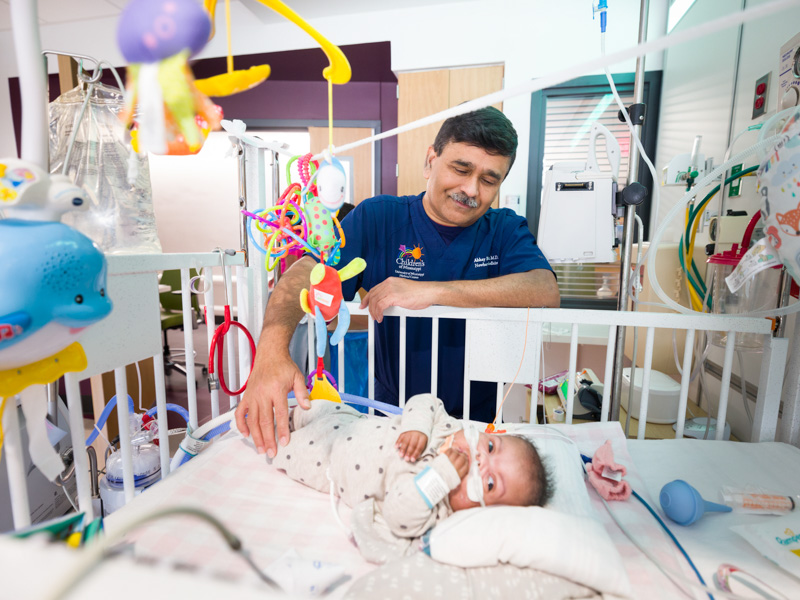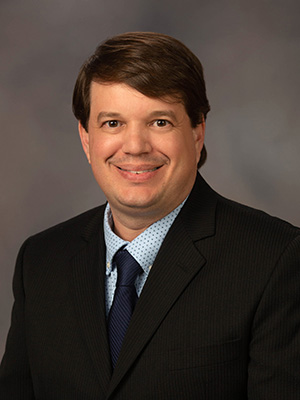NIH grants account for more than half of all research funding at UMMC

For nearly half a century, Dr. John Hall, Arthur C. Guyton Professor and Chair of the Department of Physiology and Biophysics, has been continuously funded by the National Institutes of Health, amassing more than $90 million in research grants for the University of Mississippi Medical Center.
Starting with an NIH postdoctoral fellowship in 1975 and his first NIH R01 grant in 1978, those awards have helped propel Hall’s research on cardiovascular, renal and endocrine physiology.
“NIH funding has been critical for my research for the past 49-plus years at UMMC,” said Hall, also director of both the Mississippi Center for Obesity Research and the Cardiorenal and Metabolic Diseases Research Center (CMDRC).
“Without NIH funding, we would never have been able to make substantial advances in understanding the pathophysiology of major diseases such as hypertension, heart failure, obesity, diabetes and chronic kidney disease.”
Awarded more than 100 NIH awards during his career, Hall currently receives funding as principal investigator for the CMDRC and as co-investigator of the Mississippi Center for Clinical and Translational Research. He’s also co-investigator on two NIH R01 grants related to heart failure and obesity and has been awarded a new grant this year to purchase equipment that will provide new technology for the research program.
The economic impact of NIH grants extends beyond scientific research. From 2016 through 2022, Mississippi saw $780 million of new economic activity and the creation of more than 5,500 jobs, a direct benefit of the funding, according to United for Medical Research, a coalition of leading research institutions, private industry and patient advocates that studies the effect of the grants in rural states.

NIH grants also boost household incomes, generate tax revenue, contribute to innovation and attract businesses and highly skilled workers to the state, enhancing the work force. The 6-year timespan represents an era of strong congressional funding for NIH after a long period of flat funding, UMR reported.

NIH grants account for almost half of all research funding at UMMC, funding everything from individual research project grants to training grants, center grants, clinical trials and large cohort population studies, said Dr. Lee Bidwell, associate vice chancellor for research. Had NIH funding remained flat, the Medical Center’s research productivity would have suffered.
“Flat funding of NIH hinders our ability to compete scientifically at a national level,” Bidwell said. “And because so much of our funding at UMMC comes from NIH, our research success is highly dependent on NIH funding levels. Additionally, like all other aspects of our lives, scientific research is affected by inflation. Therefore, increasing funding to NIH and other funders is necessary just to keep pace with inflation.”
Thanks in part to Hall’s research, UMMC received 53 percent of the $61.5 million the NIH awarded in Mississippi during fiscal year 2022.
Bidwell attributes the Medical Center’s success at securing NIH funding to its accomplished researchers.
“We have a great group of faculty at UMMC who are both highly motivated to seek extramural funding and highly skilled at the process,” Bidwell said. “Winning an NIH grant requires one to have a research project that is significant to improving human health, often supported by strong scientific data.
“Being the state’s only academic medical center, our faculty are working on very important research questions, and they are well-versed in the processes and details that go into crafting a competitive NIH grant.”
Hall attributes his success in gaining NIH funding in large part to UMMC’s “team” approach to research.
“Understanding complex diseases such as hypertension, heart failure, obesity and kidney diseases requires a multidisciplinary approach and cutting-edge technologies that are challenging for a single investigator to obtain and master,” he said.
In the early days of the Medical Center’s research program, researchers established core facilities that have provided state-of-the-art equipment and services that would otherwise not be available for a single laboratory, said Hall. That infrastructure has made grant applications more competitive.
Perhaps even more important, many of UMMC’s major grants involve multiple investigators using different approaches and technologies to address major health problems.
“Any success that we have experienced over the years has been the result of many investigators working together to improve our applications and overall research productivity,” Hall said.
When he became chair of the Department of Physiology and Biophysics in 1989, Hall didn’t have the budget for modern equipment for molecular biology or genetics, then emerging as important tools for cutting edge research.
“I asked Dr. Norman Nelson, vice chancellor for health affairs, if he would permit us to pay a major part of our state-funded salaries with our NIH grants and then release the unexpended state funds to purchase new equipment. He agreed, as did subsequent vice chancellors, and this initiated a much-needed Research Enhancement Plan that was eventually extended to all departments.
“This plan has been critical for developing the new research technologies and infrastructure at UMMC that have permitted us to be competitive for NIH funding.”
Though the true impact of NIH-funded research at UMMC is difficult to quantify, Hall said the word “tremendous” describes its overall impact on investigators at UMMC.
“Data from multiple sources indicates every $1 of NIH funding generates at least $2 to $3 of economic impact. Without NIH funding, many faculty, postdoctoral fellows and research staff would not be employed in Mississippi.
Not only that, but the three newest research buildings at UMMC – the Guyton 1 and 2 buildings as well as the Translational Research Center – would not exist, and the educational and clinical programs would be diminished, said Hall.
For every dollar that NIH awards for research, it provides an additional 55 cents for infrastructure costs. “Very few sources of support provide this amount of margin above the direct costs,” said Hall.
Over the past 40-plus years, Hall estimates at least 160 trainees – including visiting scientists, postdoctoral fellows, graduate students, medical students and undergraduate students – have conducted research in his lab, which has employed at least as many research assistants and technical staff.
Said Hall: “Strong research programs attract top clinicians and educators and are an essential component of an academic health science center.”


